by Briscoe White | Mar 10, 2011 | Containers, Gardening, Growing, Herbs |
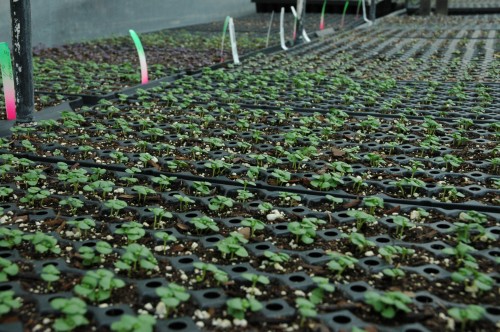
The Stevia plant is native to South America, and has long been grown for its sweet leaves. Stevia extract contains up to 300 times the sweetness of sugar! This beautiful little plant is quickly becoming a popular natural sugar substitute. Although it is sweet, stevia is also known to contain natural insect-repelling properties, bypassed by aphids, grasshoppers, and other harmful pests. (The production of their super sweetness found in the plant’s leaves, is actually a deterrent to insects who can’t stand such an overdose of sugary flavor!)
Stevia is difficult to grow from seed because many places do not carry stevia seeds and it can be difficult to germinate them at home- so let us do all of the hard work for you! Our stevia plants are well-established and ready to be added right to your garden. Stevia is relatively sensitive to cold climates, so be sure any threat of frost has dissipated and soil temperatures are above 50 degrees before you plant outside. Stevia likes well-drained, rich and loamy soils. Add some compost to the top of your beds– the shallow roots will soak the nutrients right up.
Are you a container-gardener? Stevia is quite versitile and will grow great in pots on your porch, balcony, or windowsill as well.
by Briscoe White | Mar 9, 2011 | Gardening, Growing, Herbs, Miscellaneous |
People garden for many different reasons. For us here at The Growers Exchange, it’s not just a vacation from the stresses of life, but a mission to increase our quality of life. Herb gardening has always been popular throughout history and with current economic instability, a trend towards sustainability and a renewed love of natural living, it has large, modern following.
Adding more herbs to your diet will help save you more money and give you a tasty, nutritious bonus to your diet. Here are five of our favorite herbs that are rich in medicinal and culinary value and versatility, that you can grow in your garden and use frequently:
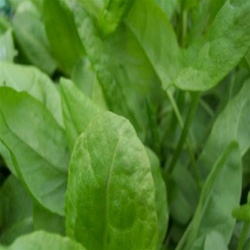
Rumex acetosa ‘Blonde de Lyon’
An herb familiar to French cuisine, Sorrel is very high in Vitamins A, C and B1, as well as Potassium. Commonly made into soup or stew, you can also add it to your salads for a zesty kick that will pack a ton of nutrition into your meal. During long winters and arduous journeys, sorrel was eaten to prevent malnutrition and diseases like Scurvy, because of its high Vitamin C level. Perennial in zones 4-8, try adding Sorrel to your favorite soup, salad or fish dish for a lemony zest and boost of vitamins!
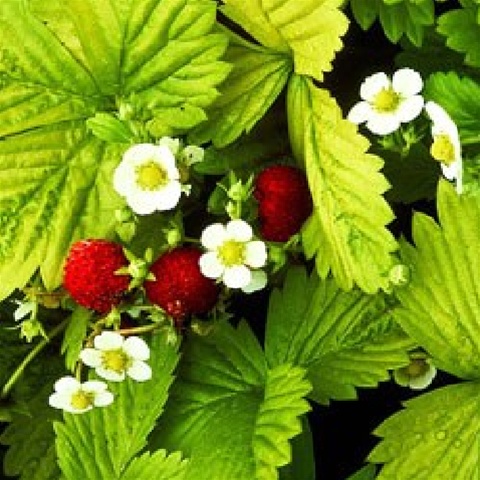
Rosaceae Fragaria vesca
These lovely little border plants are much sweeter than the usual strawberries you find in the grocery store. Smaller and more akin to wild strawberries, the Alpine Strawberry has value as both a medicinal and culinary herb. Medicinally, the plant acts as a digestive aid and astringent and the juice is antibacterial. You can treat sunburns by making a mash of the berries and applying it directly to affected areas. Nutritionally, they are not only deliciously sweet but are packed with Vitamin C and antioxidants– an immune boosting value! They are also contain a natural bleaching agent and can help whiten your teeth.
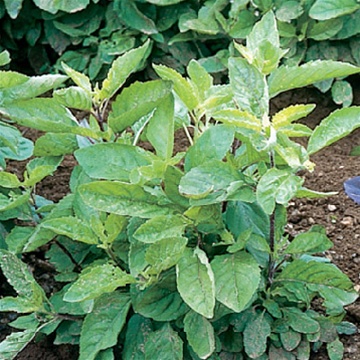
Ocimum sanctum
Culturally important and religiously sacred to many cultures, the ‘Holy (Sacred) Green’ Basil is also known as Ram Tulsi. Like its more colorful counterpart, the ‘Holy (Sacred) Red’ Basil, studies show that the both may reduce blood pressure, help liver functions and reduce the risk of diabetes. They are both antioxidants, antibacterial and anti fungal, though the ‘Holy Green’ is milder in flavor than the ‘Holy Red’. Try some in your next stir fry for a flavorful dish with medicinal benefits!
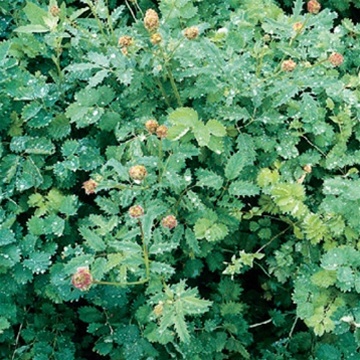
Poterium sanguisorba
A whimsically beautiful herb with a lovely rose aroma, Salad Burnet has medicinal value as an astringent. Easy to grow, even in harsh elements terrain, Salad Burnet has a cucumber-like taste that compliments salads well. Try using some in your wraps, on sandwiches or in soups for a lovely, subtle flavor. Make sure to use the plant’s tender leaves, as they get bitter as they grow. Pair it with Rosemary, Oregano, or Dill for a great flavor profile!

Origanum x majoricum
Milder in flavor than its cousin, Oregano, Sweet Marjoram balsam-like flavor is a key ingredient in the culinary herb mixture, Bouquet Garni. A delicious seasoning for soups, stews and meats, make sure that you add it last for a more intense flavor. Make sure to harvest the plant before it goes to flower, for the best tasting results. Aromatically it has a lovely fragrance and symbolizes love and prosperity. Its medicinal benefits also make it worthy of every garden, as it has been known to soothe menstrual pain and act as a digestive aid.
by Briscoe White | Mar 9, 2011 | Growing, Herbs, Inspiration, Miscellaneous |
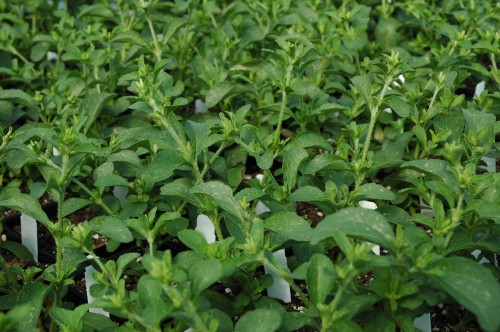
Looking to replace sugar in your life? Try Stevia! Stevia is an herb with a naturally occurring sweetness that is between 40 and 300 times sweeter than sugar (depending on the strength of the plant and the method by which its sweeteners are extracted). The natural sweetness is derived from the plant’s glycosides, which is called Stevioside. Stevioside is intensely sweet-tasting, doesn’t break down at high temperatures, is not a mutagenic and will not cause cancer in humans. Whether extracted in liquid form or found in powdered form as an alternative to table sugar, Stevia shows to be a very valuable plant for many healthy reasons. Calorie free, this herbal substitute to weight-causing white sugar is also safe for diabetics. Because Stevia does not raise blood sugar levels, it seems to be a great alternative to sugar for diabetics, but consultation with a medical professional is advised before altering your diet. Studies also show that Stevia does not promote tooth decay and that it may in fact help prevent plaque, according to research done at Purdue University. This sweet herb is also antibacterial and may aid patients who suffer from hypertension.
Although growing Stevia from seed is a trying process due to difficult germination and a scarcity of seed, growing Stevia from established plants and harvesting at home is a cinch! This shrubby herb is a tender perennial in warmer zones and will thrive in full sun. It prefers loamy, well-drained soil and needs to be kept moist but not saturated with water. It can grow up to eighteen inches high and does great in the garden or potted in a container for easier accessibility. Stevia can be a great culinary herb for flavoring drinks and dishes, but will not caramelize like sugar, so you may want to leave it out of your meringues and other dishes that require caramelization. Try growing some today and you can easily harvest the plant’s natural sweetener with the following method:
Harvesting Natural Sweetener from Stevia Plants
Materials:
2 Cups Fresh Stevia leaves, washed
1 Measuring Cup
Coffee Filters
1 Sauce Pan
1 Cup Grain Alcohol (You can use Vodka, Scotch, Brandy or whatever you prefer)
1 Strainer
1 Knife
1 Glass bowl
Preparation:
1) Chop the fresh Stevia leaves well to release the natural sweeteners. This will allow the leaves to more easily break down and for more of the plant’s sweetness to be extracted during the distillation process.
2) Allow the chopped leaves to steep in one cup of your preferred grain alcohol for twenty-four hours, in a covered glass bowl. Don’t worry. The alcohol will later be cooked out of the mix, but allowing the leaves to “bathe” in stiff spirits will separate the plant’s chemical components, removing the natural stevioside that we want.
3) After about twenty-four hours, strain the mixture through a strainer lined with coffee filters. This will remove and unwanted leaves and other plant materials, allowing only the herb’s extract and the alcohol to pass through.
4) Add the extracted concoction to your sauce pan and heat on low. Be sure not to simmer or boil your extract, as you want it to be hot enough only for most of the alcohol to evaporate out.
5) Once the majority of the alcohol burns off, your result is a concentrated extraction of the herb’s natural sweetener.
6) Make sure to dilute with water before using, as this is a concentrated form of Stevia that will be very sweet and may overwhelm your dish. Dilute with one part Stevia extract, to three parts water.
by Herb Exchange | Mar 3, 2011 | Basics, Containers, Flowers, Gardening, Growing, Herbs, Indoor Gardening, Inspiration, Miscellaneous, Urban Gardening |
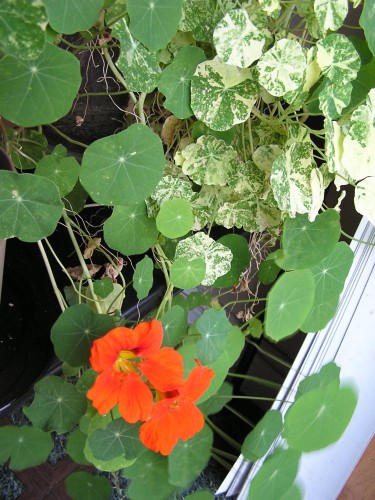
As some of you may have followed our previous blogs on our Social Media and Marketing Director, Caroline’s Nasturtiums, here’s an update on her indoor garden!…
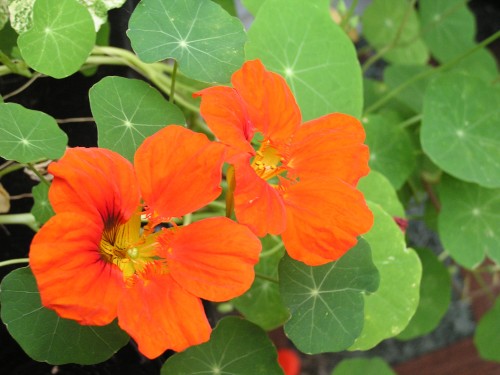
Those who know me, know that I’m a pack rat. I can’t stand to waste anything that has potential. This, coupled with my tendency to nurture, is what led me to my first attempt at indoor gardening, or, as I like to refer to it, my “Garden of Misfit Plants”. I’ve got annuals, succulents and houseplants cohabiting on an old card table that faces the sliding glass door to my backyard, that live in (general) harmony. Barring random attacks from our two nosy cats and the occasional neglected watering, my collection of crippled Cacti, Calendula and Nasturtiums have flourished in their new homes! After trials with recent repottings, I was excited to find that my ‘Empress of India’ Nasturtiums have begun to bloom yet again and my Calendulas are about to burst open in the next few days! These annual-turned-tender perennials have been such a great experiment in gardening–let’s see how long I can keep them going!
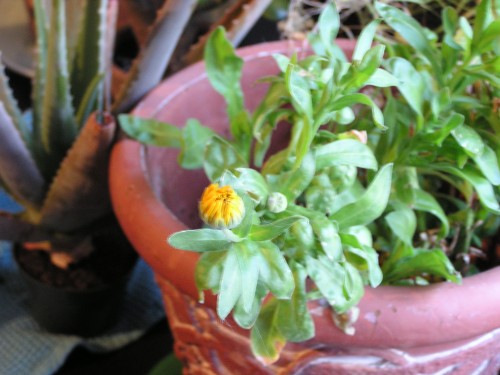
by Briscoe White | Feb 24, 2011 | Basics, Gardening, Growing, Herbs, Inspiration, Recipes |
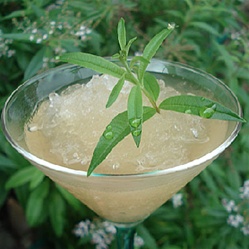
We appreciate many plants at first glance on their appearance, but the first thing you notice about Lemon Verbena is its intoxicating lemony scent. Popularized in the Victorian Era as a natural perfume and aromatic home air freshener, Lemon Verbena was considered the hottest new scent among posh socialites who would use it in finger bowls, potpourris or herb sachets that they tucked into their clothes. Ancient Greeks believed that if it was placed under their pillows, it would bring sweet dreams. Symbolizing enchantment and good fortune, Lemon Verbena has a history as sweet as its smell!
Around 1250 A.D., Incan farmers discovered that by accidentally planting a variety of Lemon Verbena near their cotton crops, that it acted as a natural insect repellent. From then on, this Argentinean native herb was grown near homes to keep pests away. Brought to Europe by the Spanish, who named the plant after the Queen of Spain in 1784, Lemon Verbena was brought to North America when pilgrims migrated to “The New World”, where it still flourishes as a perennial in zones eleven through eight, and grows as a tender perennial or annual in colder areas. (It can grow to over ten feet tall in areas with very mild winters!)
A key ingredient to many cuisines including Indian, Latin American, Mexican and French, its lemony flavor is enjoyed in everything from flakey fish dishes to desserts. It is the essential ingredient in the French tea, verveine, and can be added to greased cake pans before baking to infuse the citrus taste into desserts. A delicious digestive aid and antioxidant, Lemon Verbena is a dynamic herb with a soothing lemon scent.
by Briscoe White | Feb 24, 2011 | Basics, Containers, Gardening, Growing, Herbs, Indoor Gardening, Inspiration, Miscellaneous, Recipes |
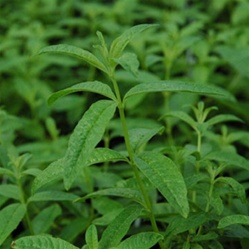
I know I say this with many herbs, but Lemon Verbena has to be one of my absolute favorites. It is easy to grow and maintain, loves living in a pot on the windowsill, and smells delightful! Lemon Verbena has a wonderful lemon flavor with no bitterness– nature’s lemon candy. Try adding a few leaves to your next cup of tea, or steep a few leaves in milk to be used in pudding or ice cream. You could even see if you can find some Lemon Verbena scented wax melts and use deluxe aroma burners to really fill your home with the scent.
Lemon Verbena likes warm, sunny conditions and well-drained soil. If kept warm inside all year, lemon verbena is an evergreen perennial; if exposed to frost, it is deciduous. Do not over-water, and prune in the fall for a bushier plant in the spring.
As previously stated, Lemon Verbena’s lovely medium-green leaves give off a light lemony scent. Before guests arrive I make sure to shake and brush the leaves around a bit, to stimulate the essential oils and really release the natural aroma of my indoor verbenas. Guests love it, especially on cold winter nights when we’re dreaming of summer lemonade and sunshine.. And might I add how much healthier it is to have fresh, all-natural, sweet-smelling herbs and flowers in your house, rather than scented candles and air fresheners? Scented candles are one of the most popular house-hold carcinogens. Plants, on the other hand, detoxify your home!
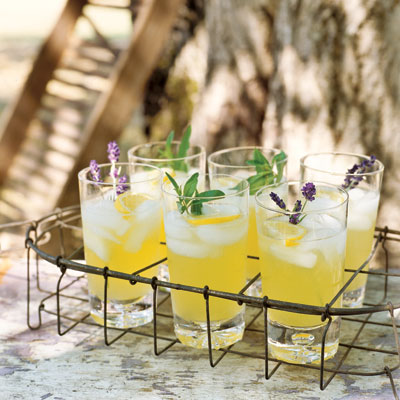
One common problem associated with Lemon Verbena is spider mites. They love the underside of the leaves. Keep an eye out for these little buggers, and if you do have a problem pick up a mild non-toxic insecticide at your favorite store. You can also companion plant herbs that are natural insecticides, like Rue, Pyrethrum and Tansy nearby to help discourage unwanted pests!













